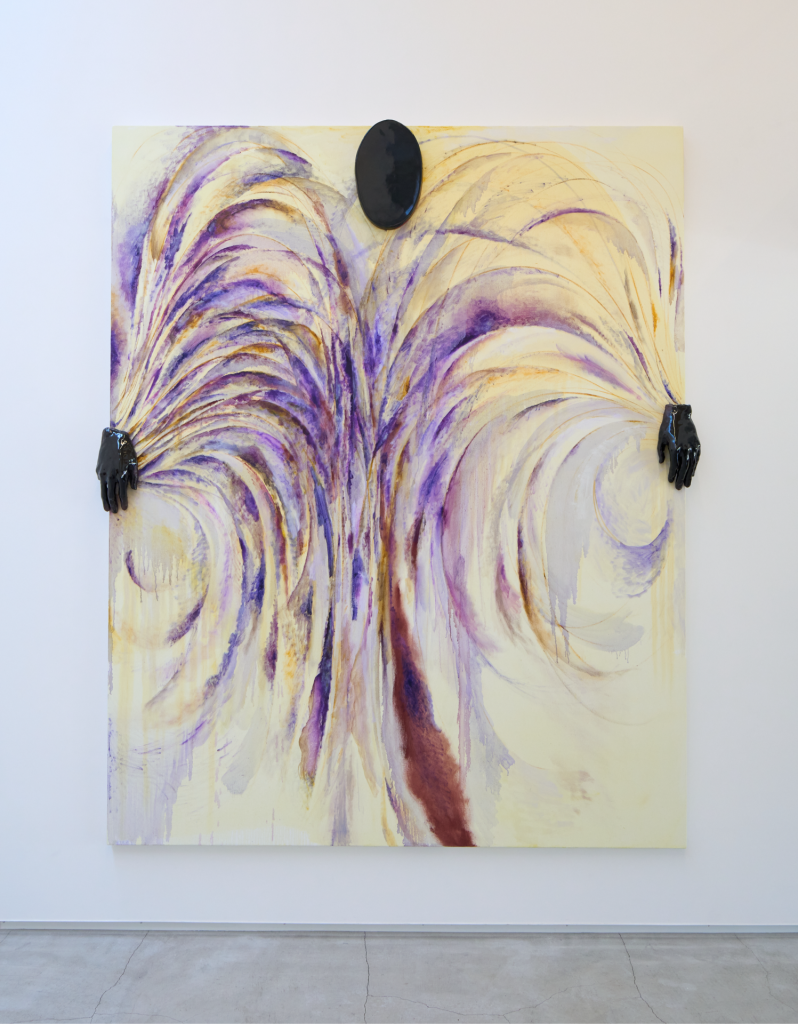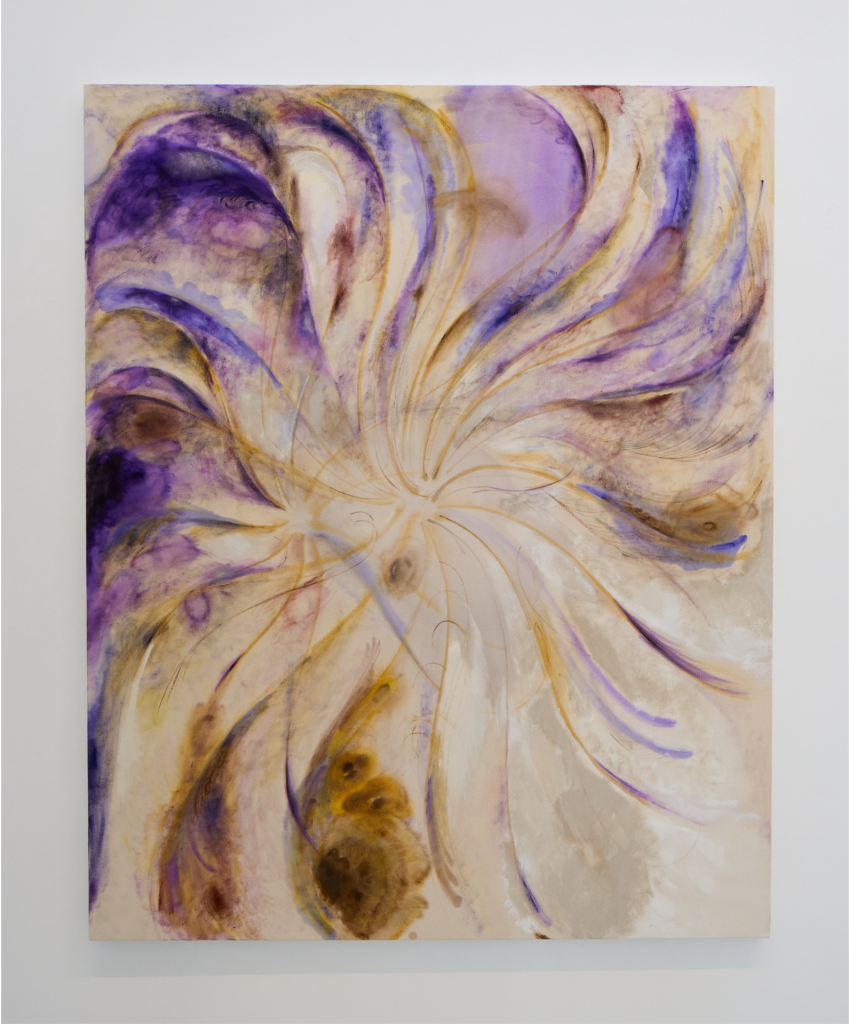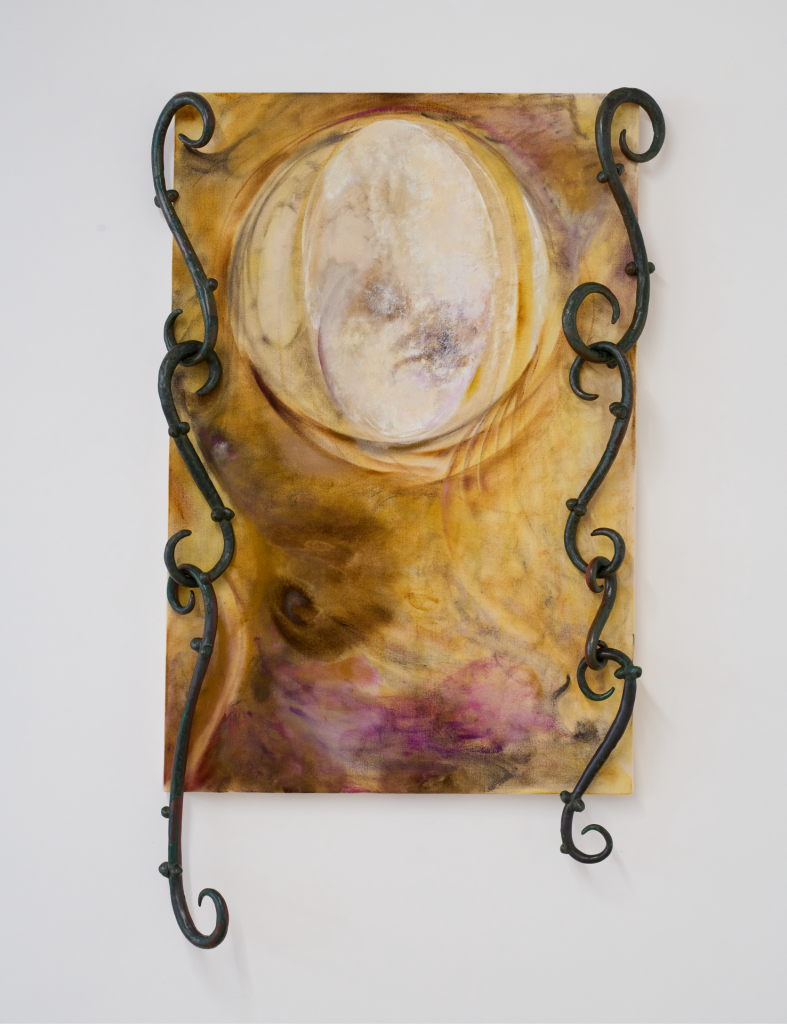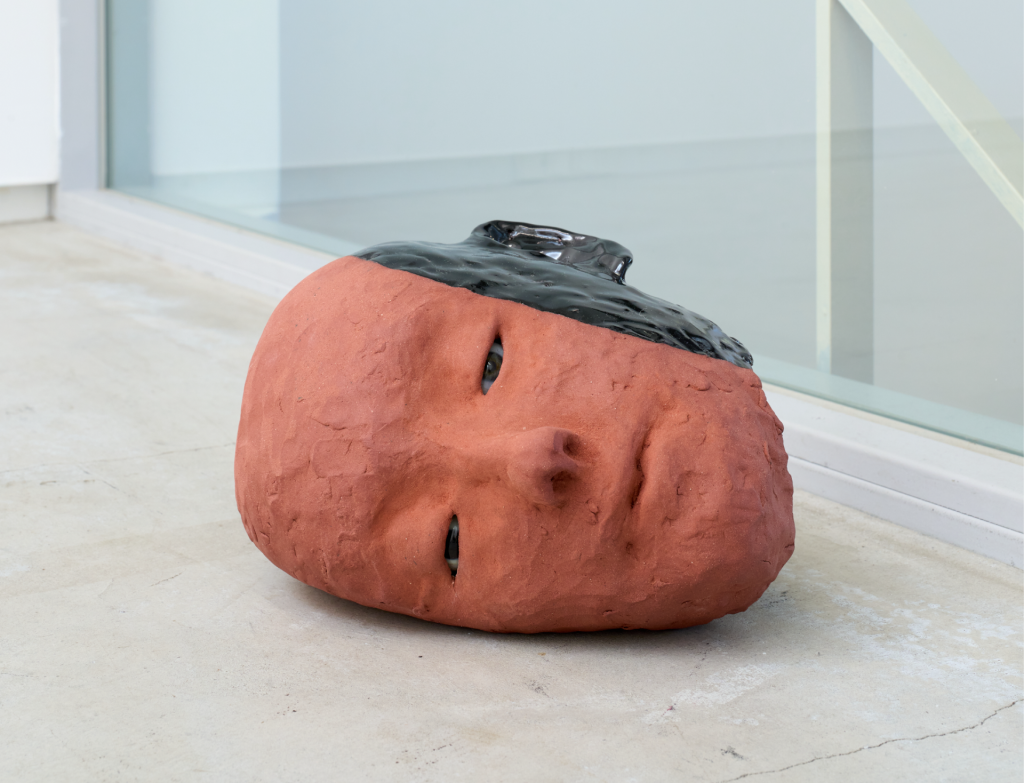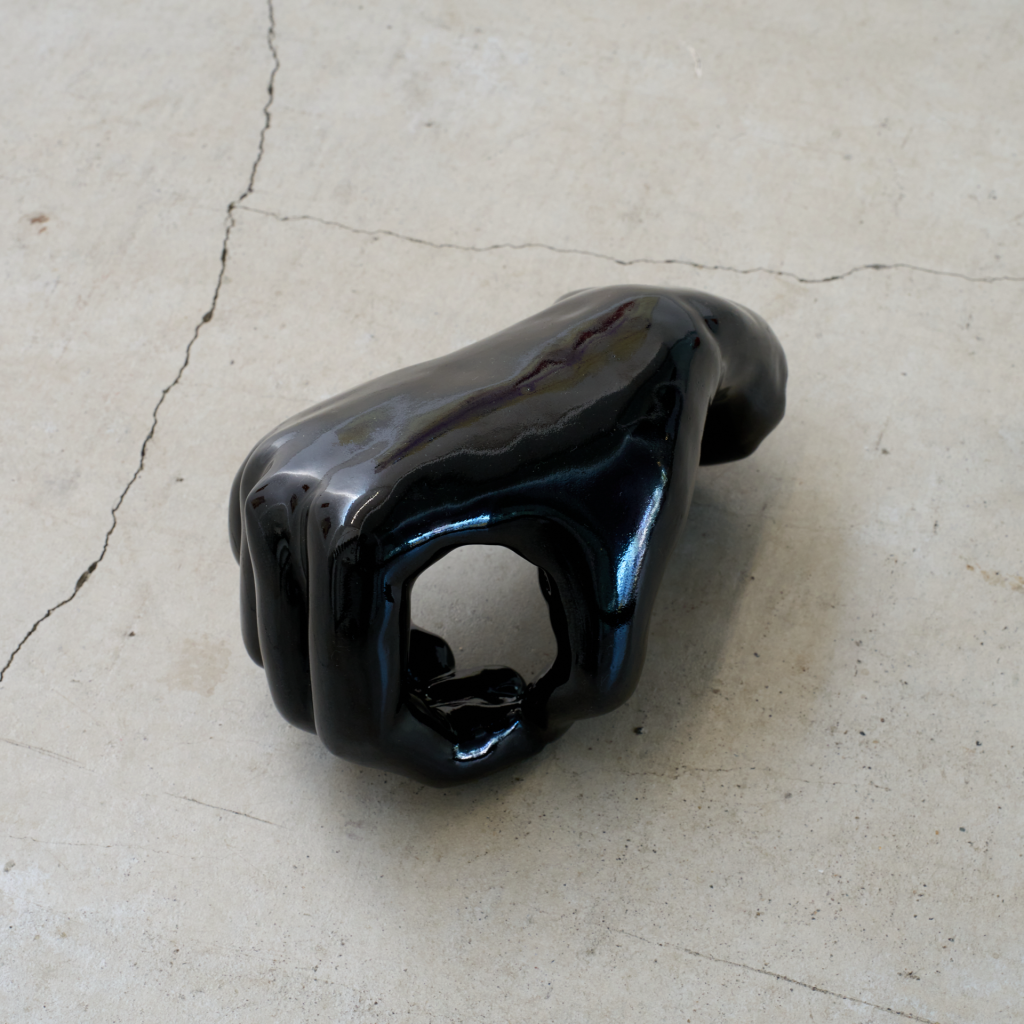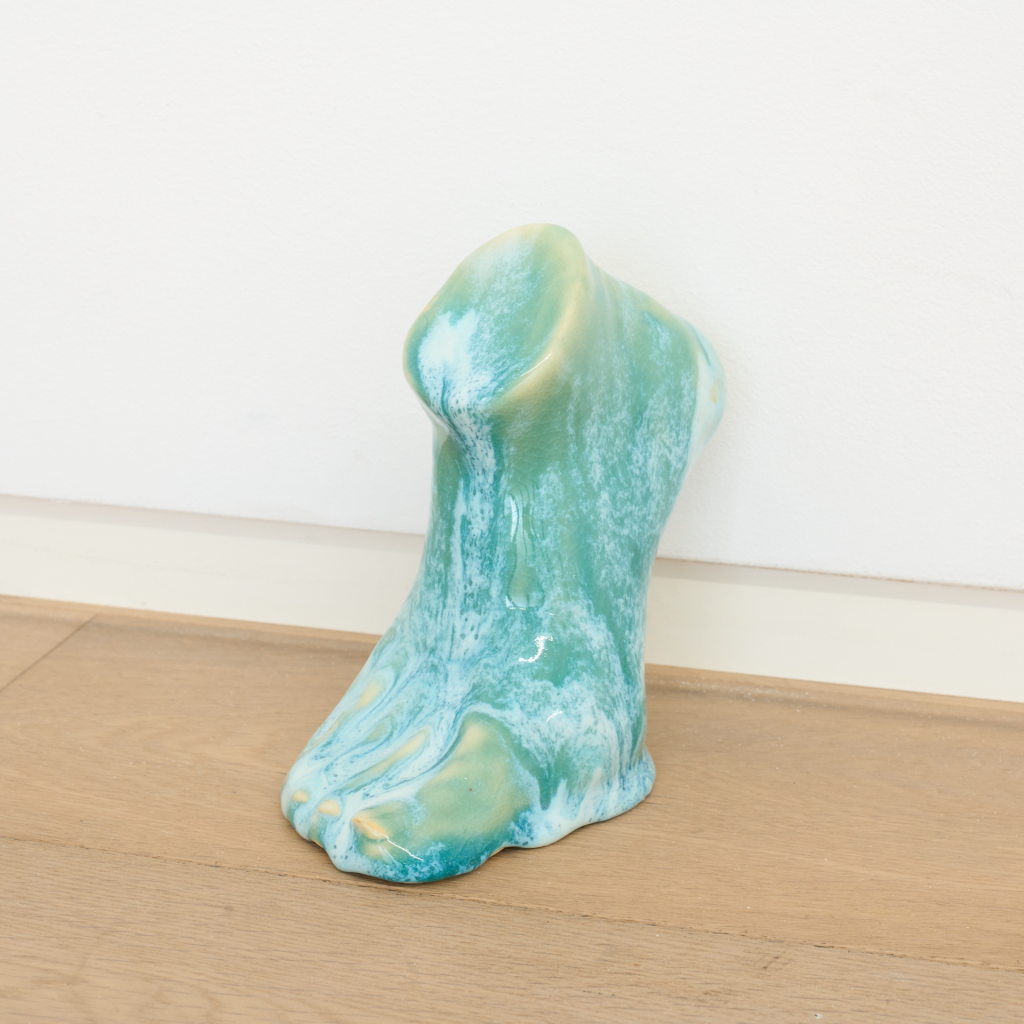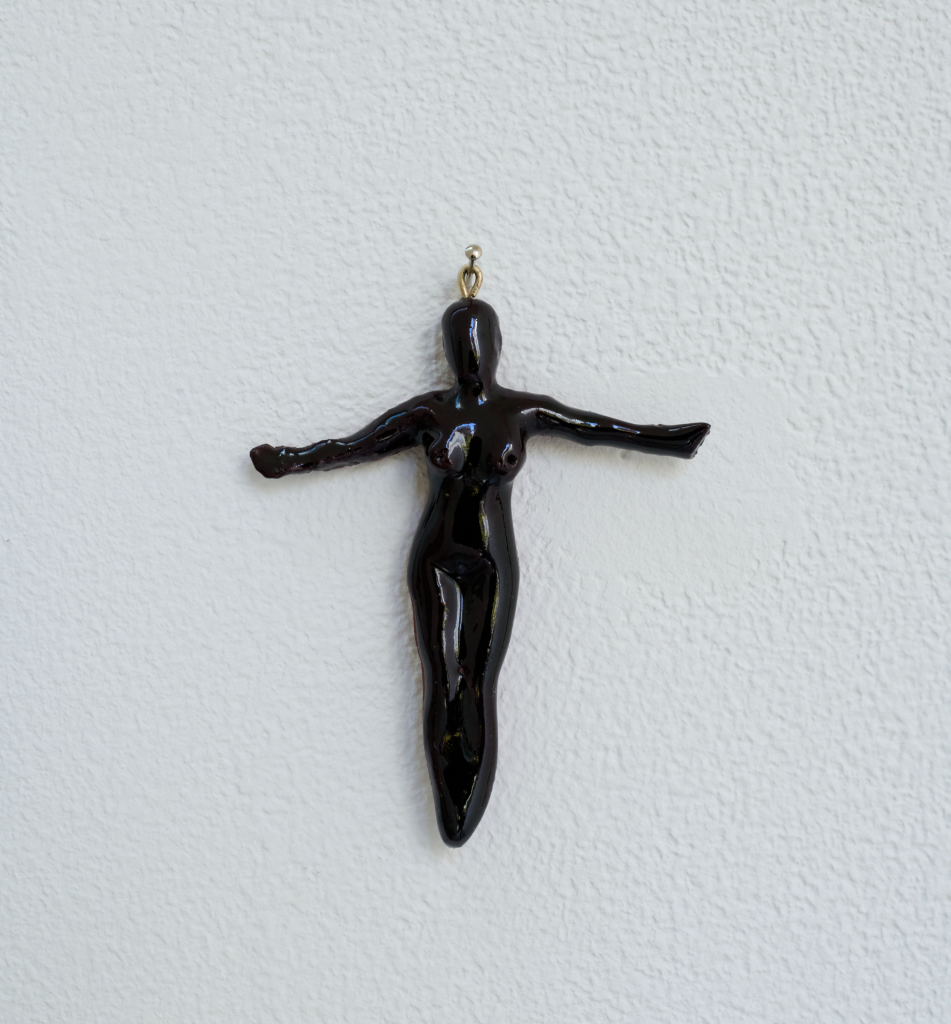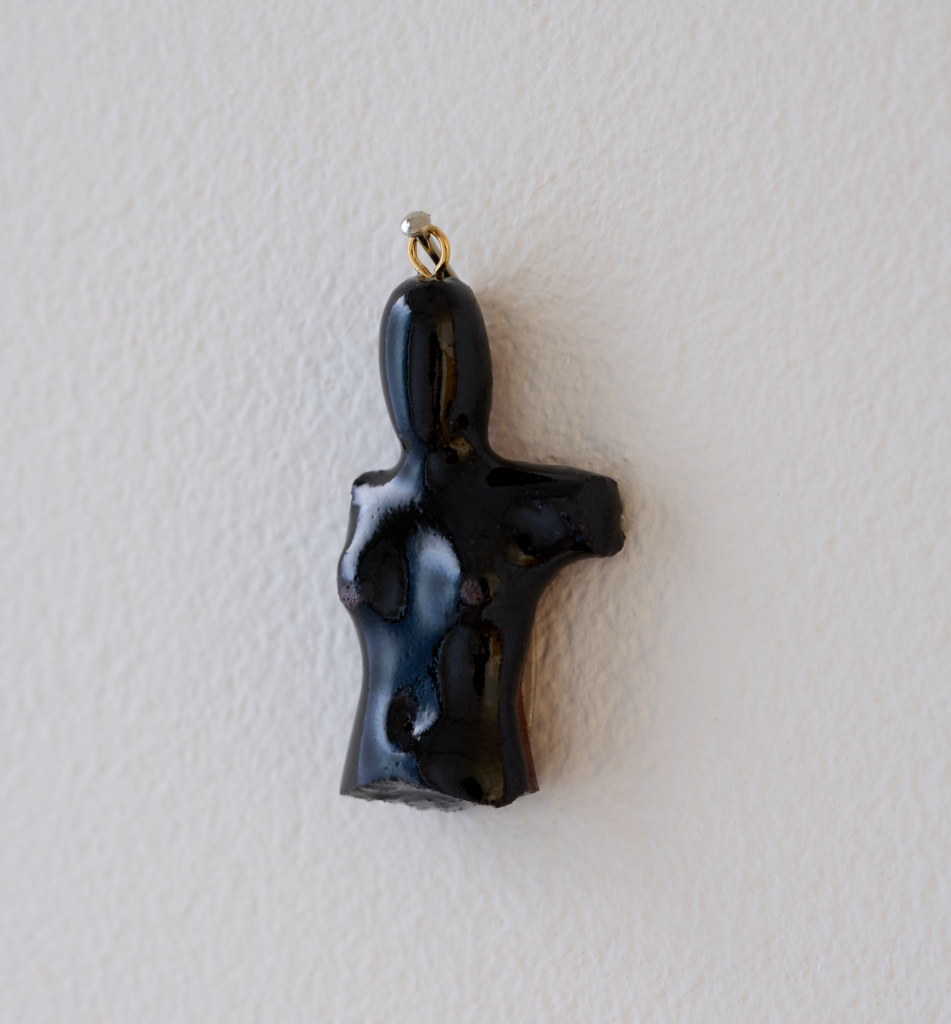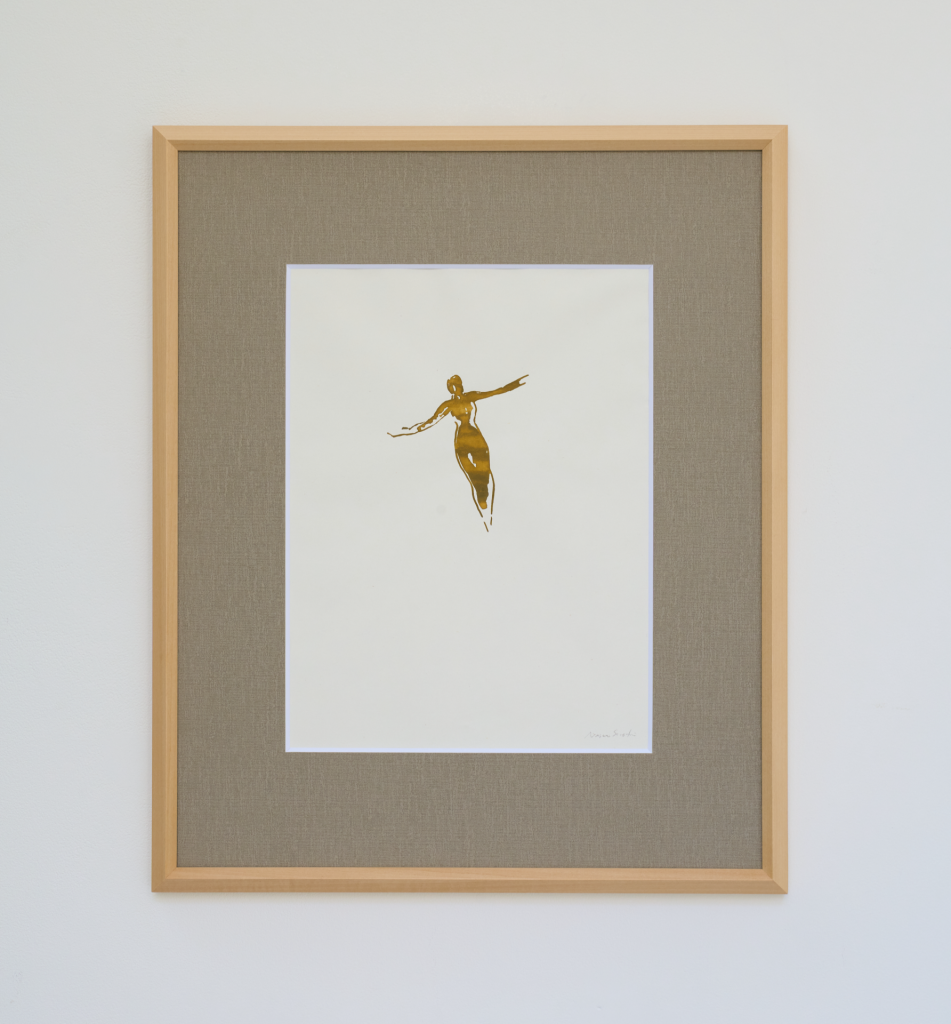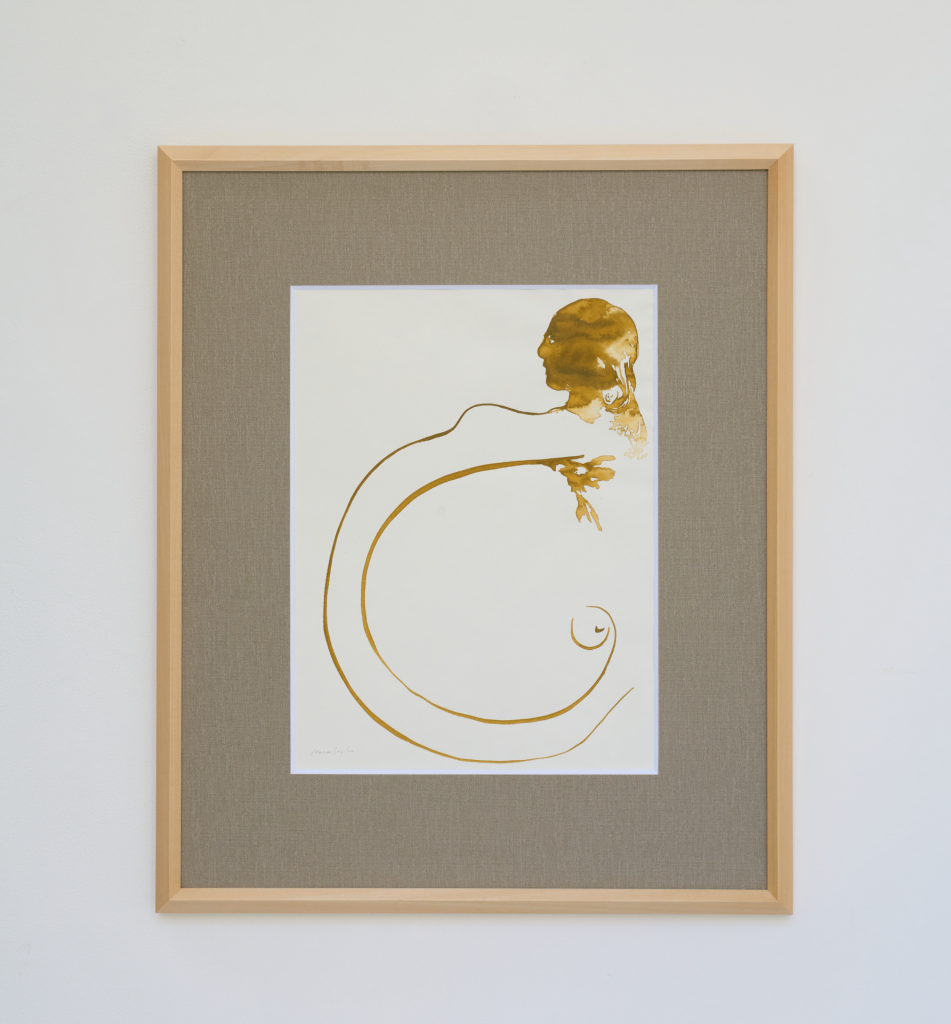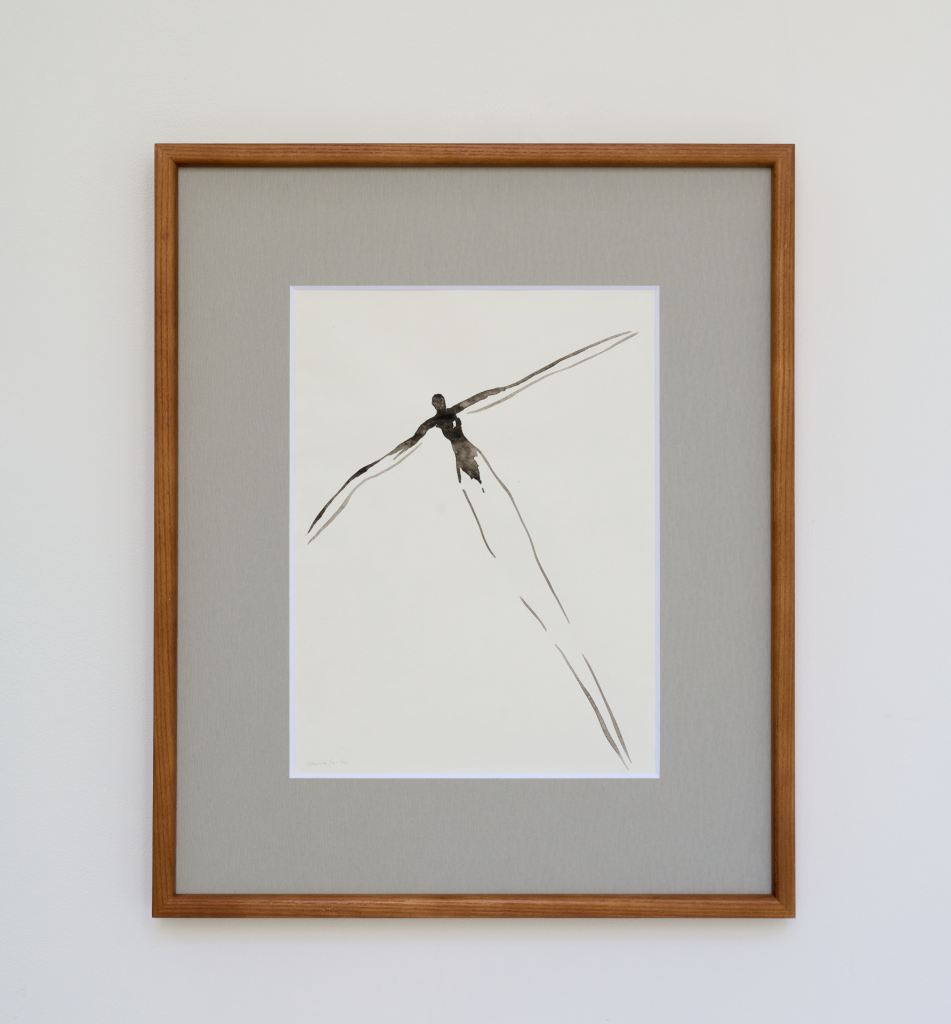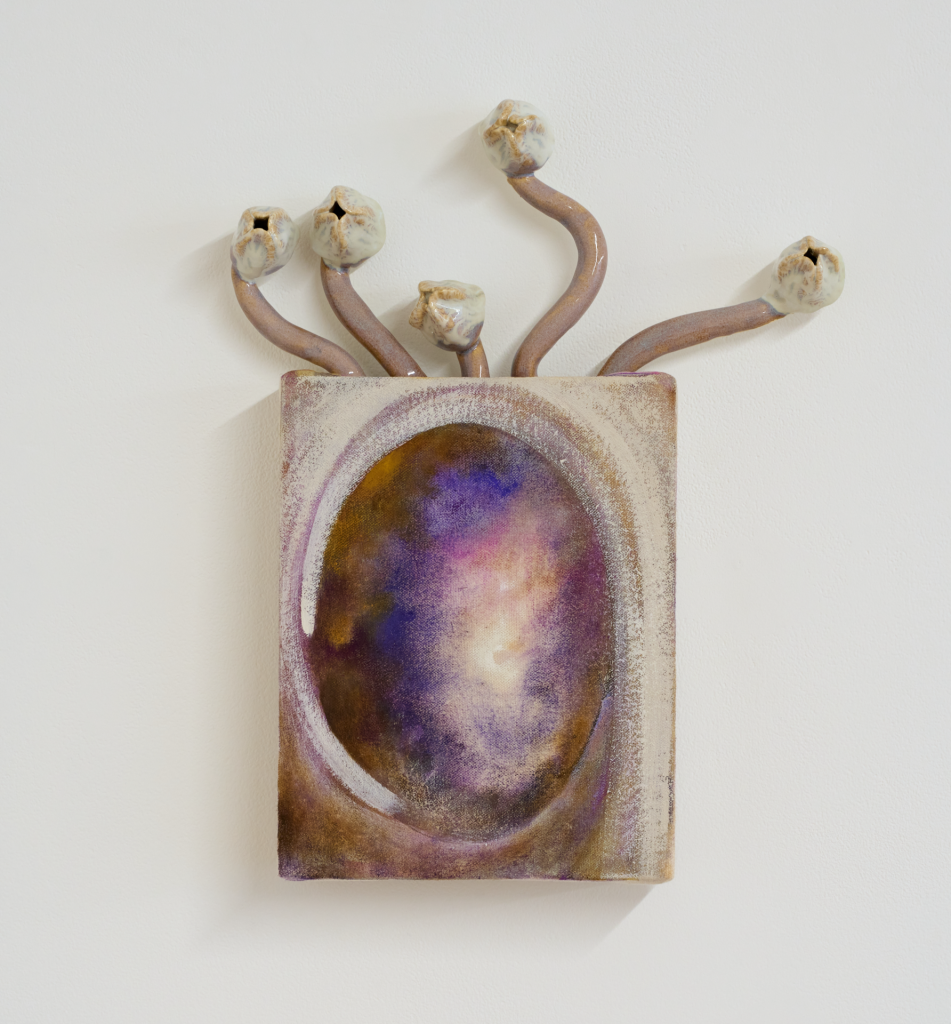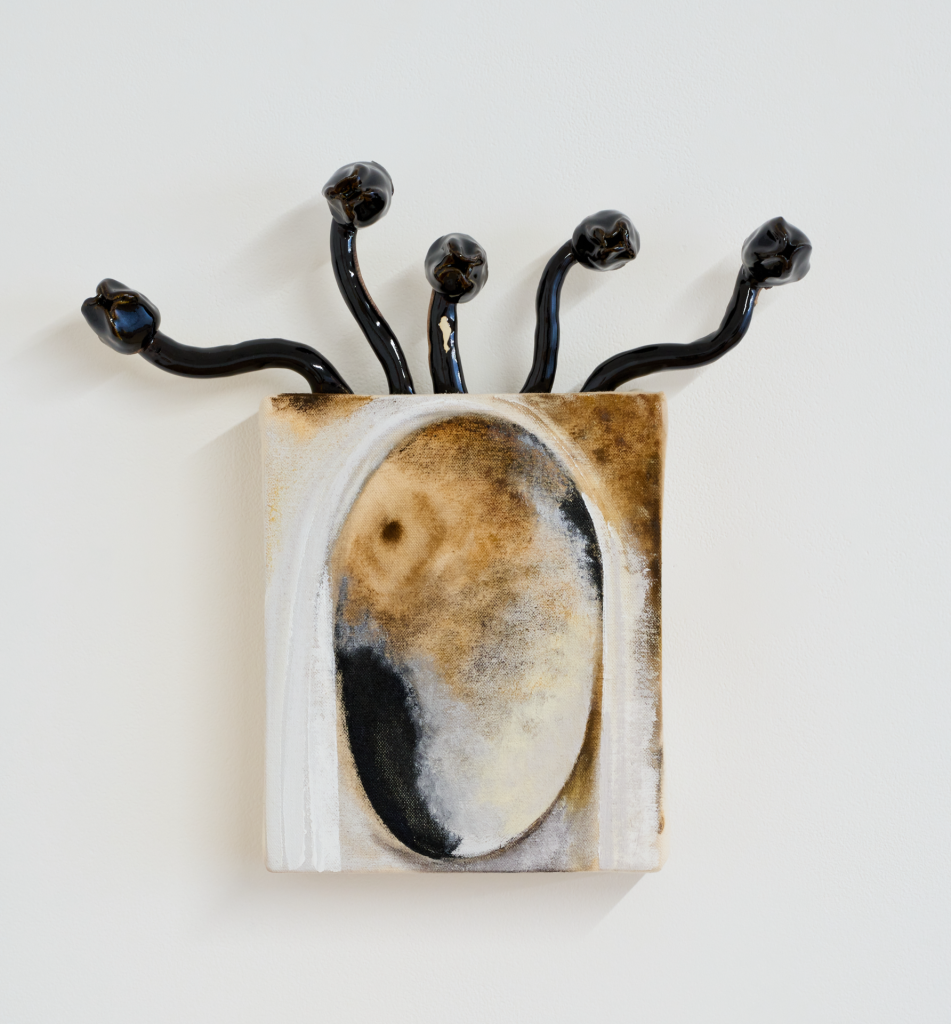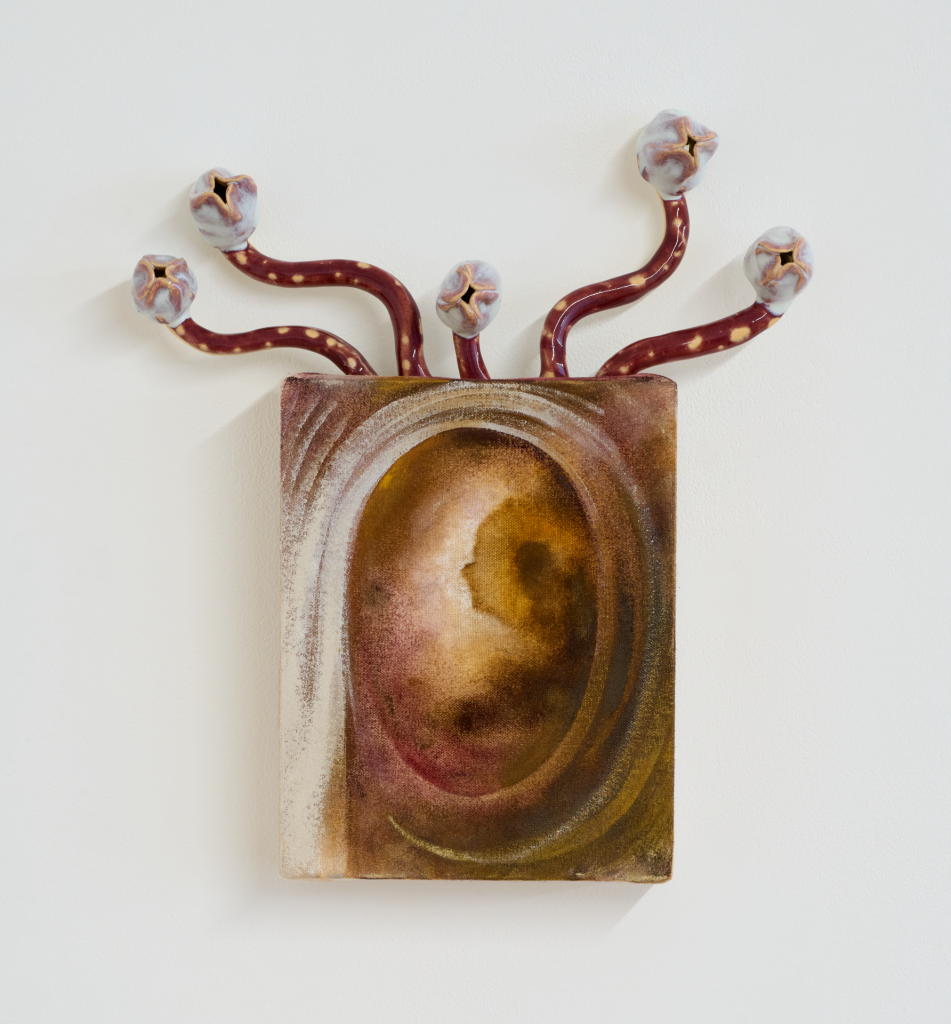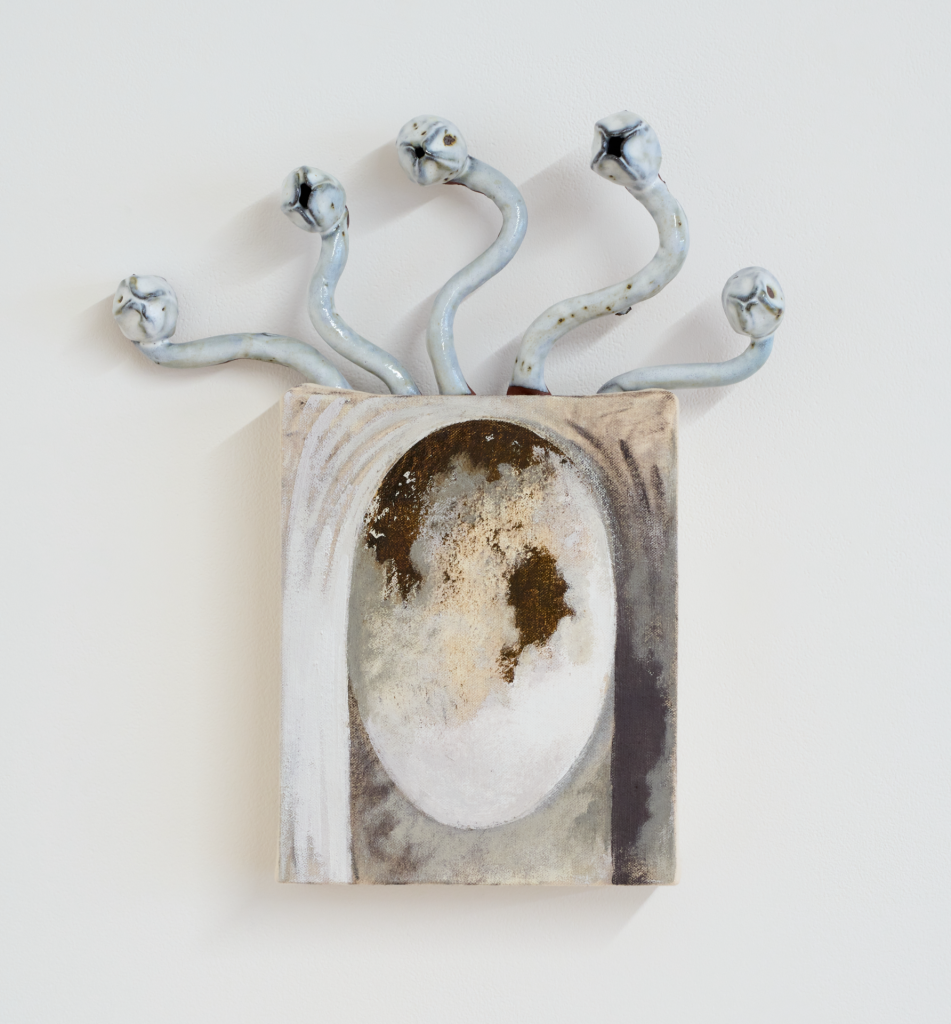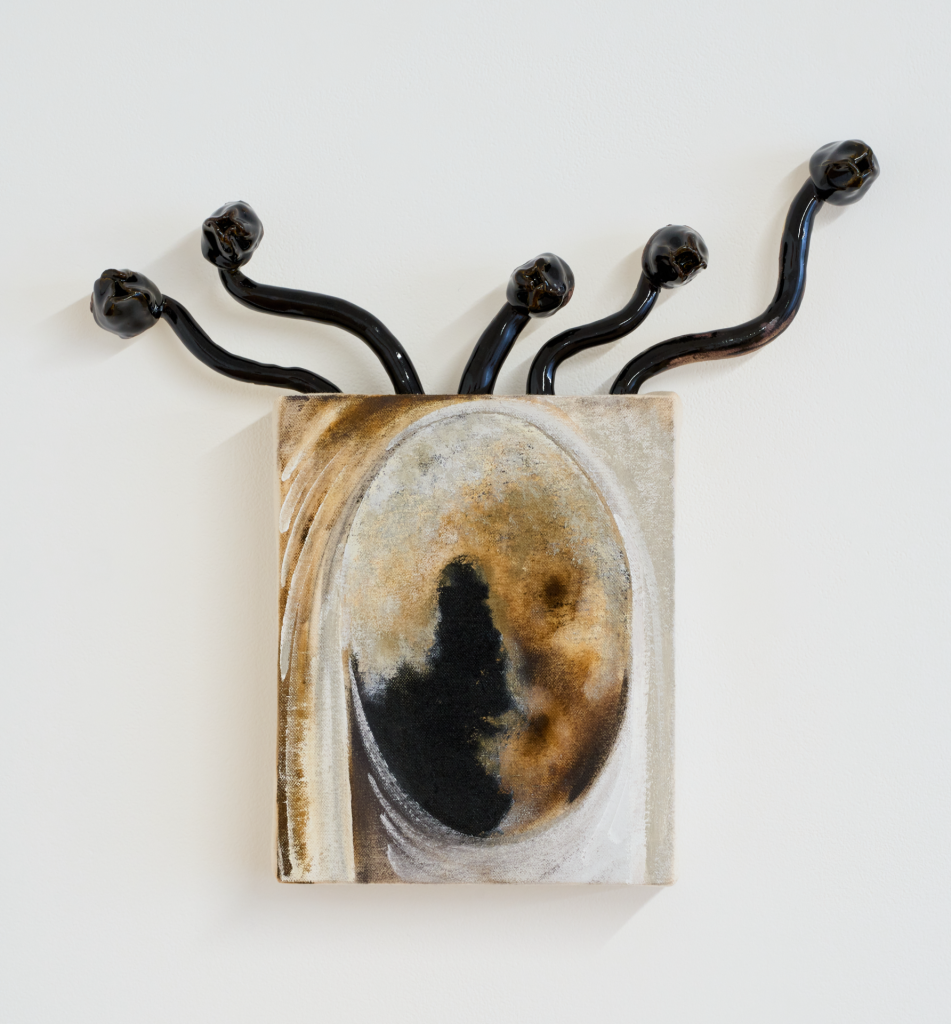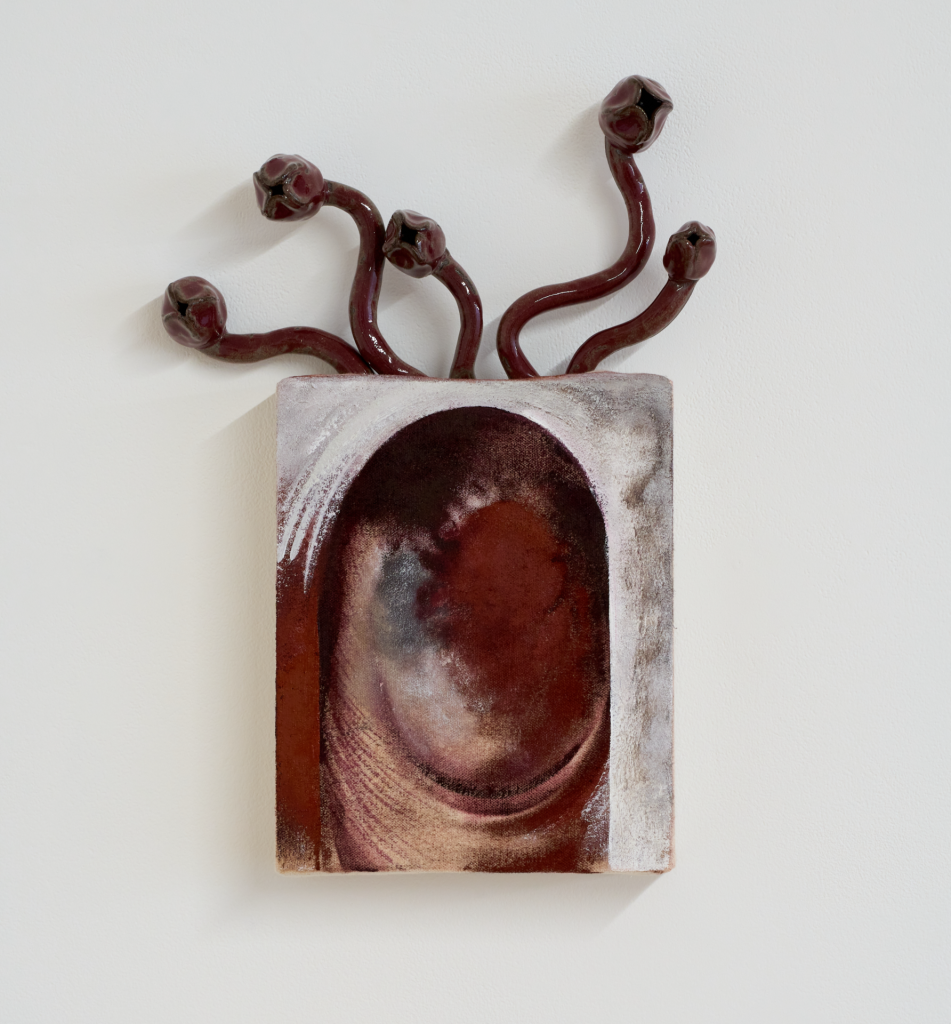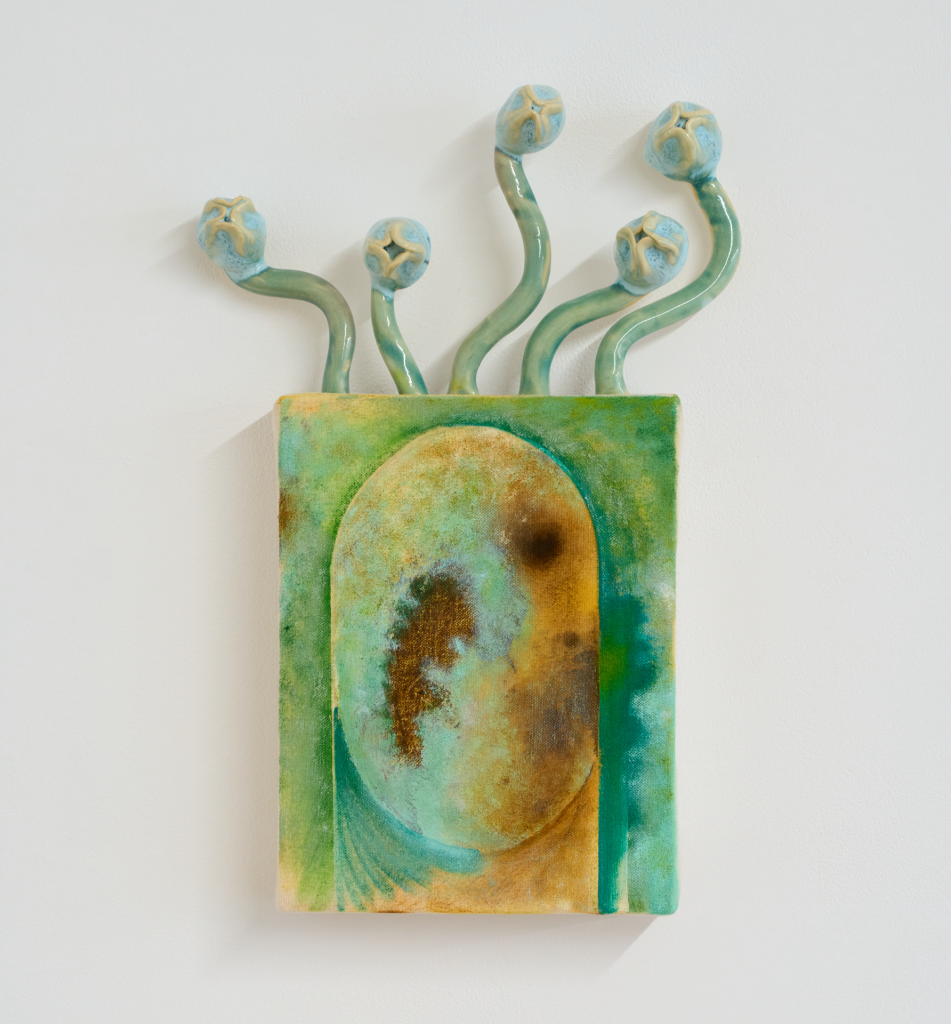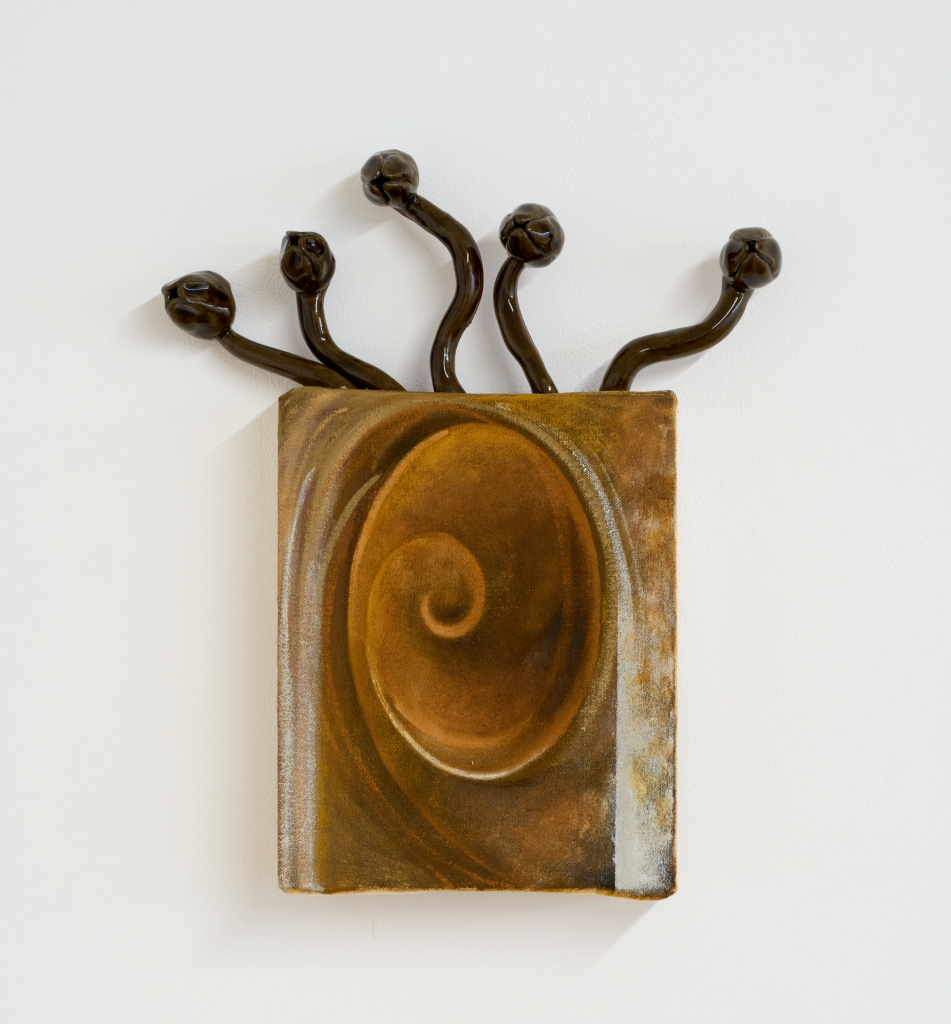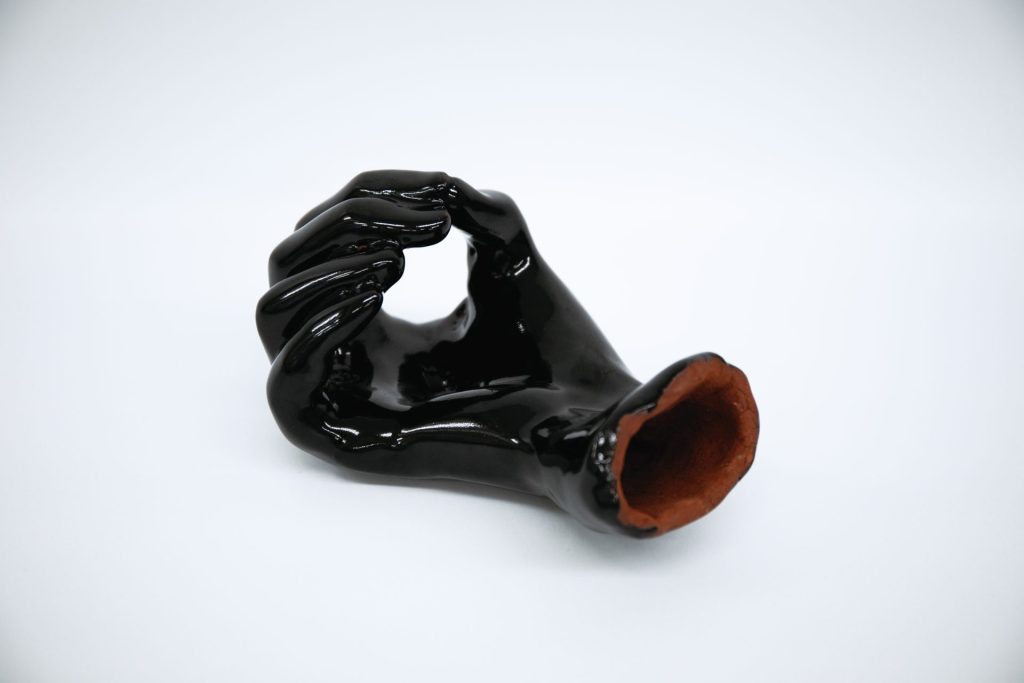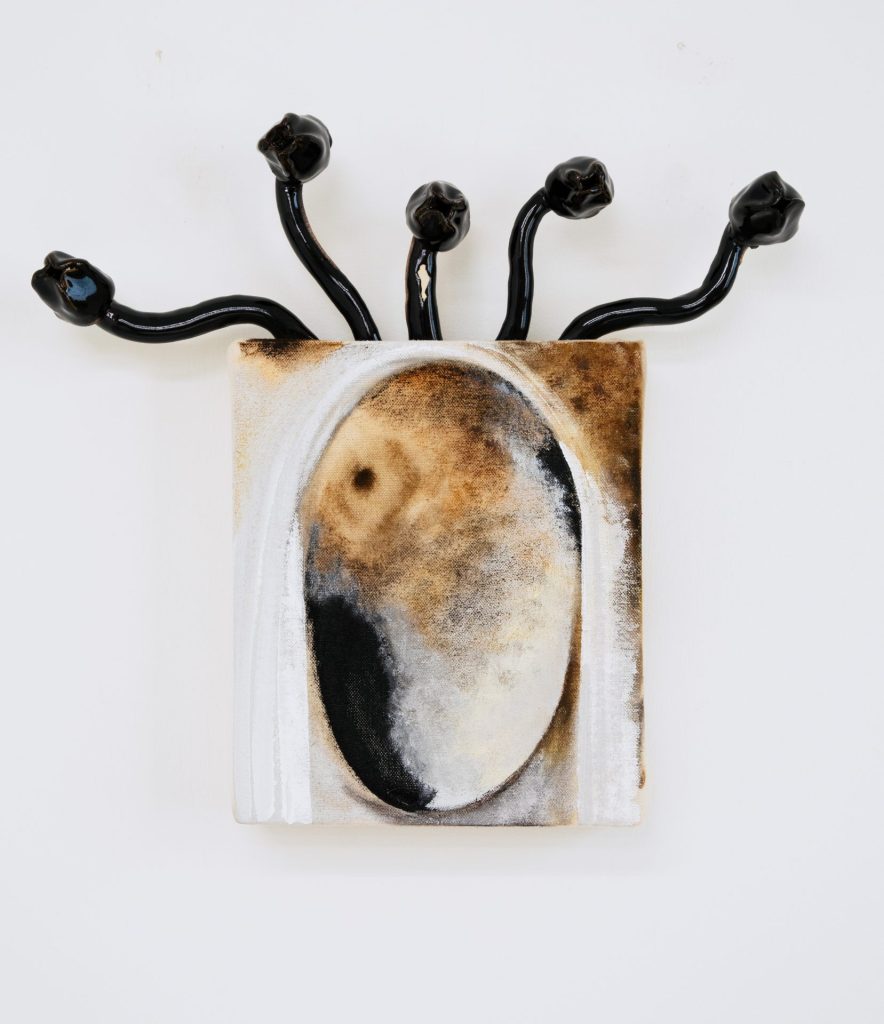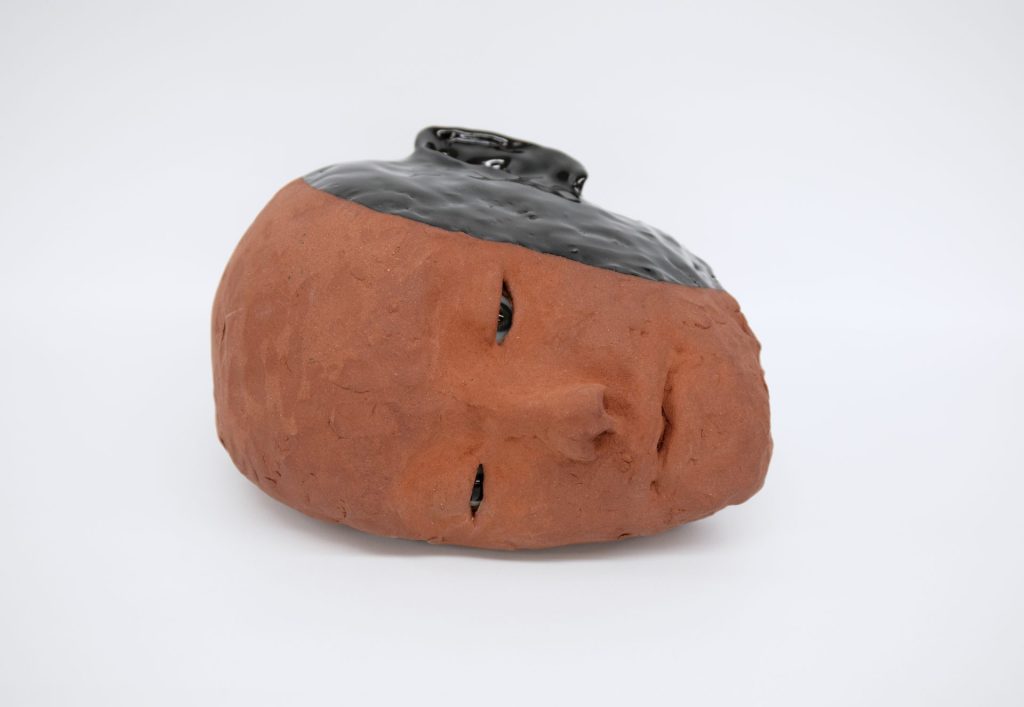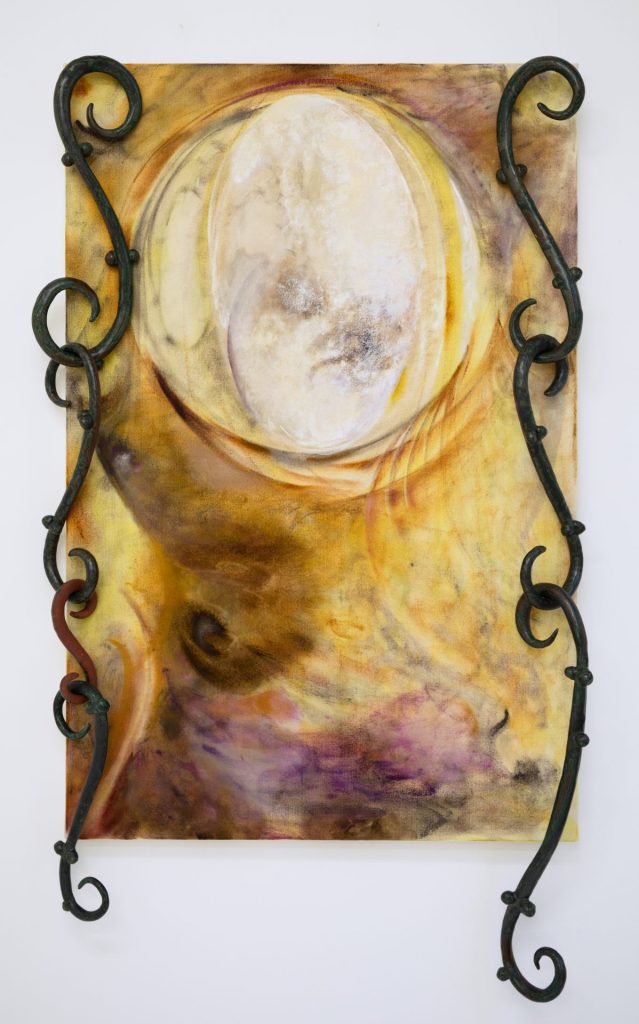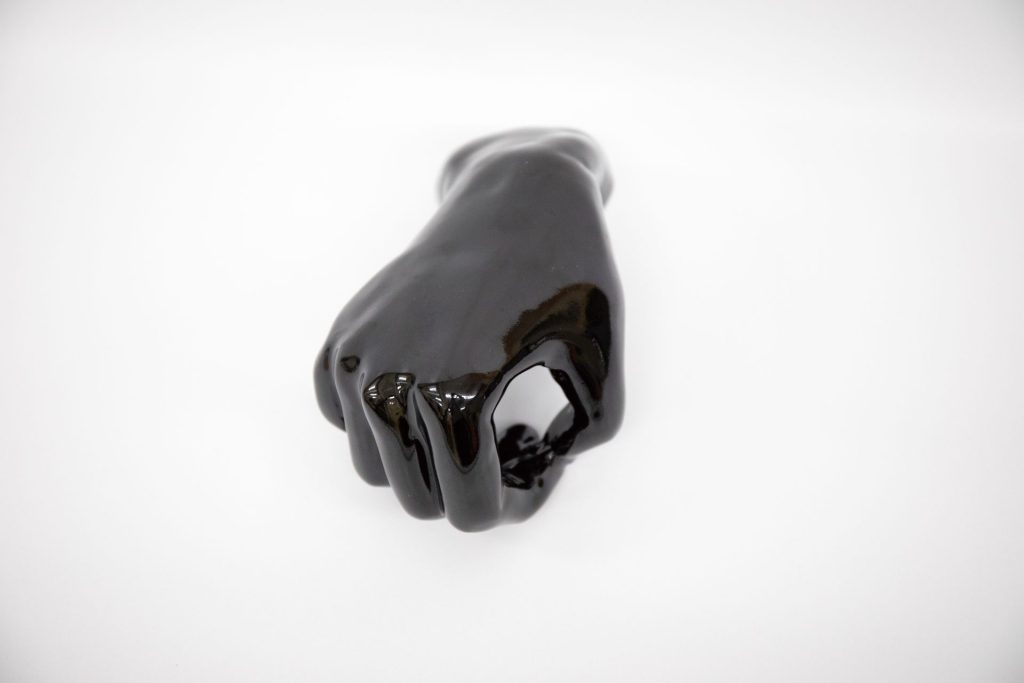EXHIBITIONS
Narumi Sasaki “As the Body”
- Information
- Works
- DATE
- 2024-03-15 [Fri] - 2024-04-13 [Sat]
- OPEN TIME
- 11:00-18:00[Tue-Sat]
- CLOSE DAY
- Sun, Mon, National holidays
Contributed by Lieko Shiga
Slightly larger than my own hand,
deeply soaked in black, as if to challenge reality
the beautifully scorched fingers craft small loops
“I have poor eyesight, you see, but I avoid wearing glasses too often. Instead, I peer through like this, using my fingers to create a makeshift telescope. It somehow clarifies things, so I use it to read things like train timetables and such,”
she explains
“I’m intrigued by this act of forming circles with my fingers, these rings that, with a simple flick, unravel like magic. Look, the circle can be easily dismantled.
” Finding this to be remarkably fascinating, she continues
To her, the interrelations of all things should remain unsealed,
their depths appearing in hues
Navigating between shades through her artistic expression,
crafting the gradient itself through painting,
employing her body in the process, at the forefront,
sensitive hands, fingertips, akin to nodes of femininity (or sexuality)
For her, “what to see” is synonymous with “what to discover,”
thus naturally, her paintings summon something palpable,
something acting as a trigger, like a hook, calling forth what lies buried in memory The painting doesn’t stay stagnant
One connects to another, and if you connect one more, it becomes three She seeks to perceive everything, radically,
This is my world alone,
but you’re welcome to enter if you wish,
and you can also leave
“This isn’t about kindness; I’m wary of that term”
Lieko Shiga | Photographer. Born in Aichi Prefecture. Since 2008, she has moved to Miyagi Prefecture, where she continues to create works that explore themes such as the relationship and memory between human society and nature, and the origins of the spirit. Her photo books “Lilly” (2007) and “Canary” (2008) won the 33rd IHEI KIMURA PHOTO AWARD. Major exhibitions in recent years include “Waiting for the Wind” (2023, Museum of Contemporary Art Tokyo), “SHÉHÉRAZADE LA NUIT” (2022, Palais de Tokyo), and “Rieko Shiga Human Spring” (2019, Tokyo Photographic Art Museum) , “Rieko Shiga Blind Date” (2017, Marugame Genichiro-Inokuma Museum of Contemporary Art), etc. She graduated from Chelsea College of Art and Design, University of the Arts London, majoring in Fine Art and New Media.
LOKO GALLERY is pleased to present As the Body by the painter Narumi Sasaki. This exhibition marks the artist’s third solo show at the gallery since 2021, focusing on the body and imagery, and its interplay and mobility.
Sasaki’s exploration of myths, legends, fantasy literatures, Symbolism and mysticism is intimately intertwined with the abstraction she employs in her paintings. It can be seen as a dialogue between indication and appearance. Concerning Symbolism, known to portray intangible aspects such as human agony, contradictions, spirituality or dreams, Sasaki views its timeline as a precursor to an era aspiring for progress. Here, she highlights humanity’s recognition of the “invisible presence,” which eludes rationality and resists systemization. This essence also acknowledges humanity’s perception of divine presence while remaining bound by the prevalent dilemma of life and mortality.
In her practice, Sasaki carefully navigates the gap between abstraction, bearing a certain sense of sublimity, purified within the linear confines of modernist thought, and her presence as a woman with a tangible body living in the present. Exploring interconnectedness in life, she delves into primal corporeality and its synesthesia and memory, consciousness and unconsciousness, as well as bodily and reproductive organs. These themes are reflected in motifs such as spirals, circles, plants, minerals, and human body, all commonly found in everyday world. As these elements permeate and expand across her canvases and foregrounds, what kind of experiential world will they conjure up for the viewer, between the physically “visible” images and the haptic * “invisible” 1 sensations therein? Describing an aspect of her practice as “embracing the contradiction between the concrete and the abstract”, Sasaki looks to explore the possibilities arising from the interaction of abstract and figurative images.
Drawing from psychology and iconography research as well, she juxtaposes figurative sculptural images alongside abstract images of her paintings, allowing the abstract forms to take on the semblance of something tangible. In this space, concrete sculptures also undergo a reversal transformation into abstract images. *2
Art historian Gottfried Boehm asserts that “showing” invariably entails “hiding” *3, with “presence” and “absence” constituting an inseparable pair. There, negative aspects and differences become active *4, leading to a process of understanding through interactive perception. For Sasaki, this may represent a space where one transcends cognitive preconception, fluidly intersecting and amplifying the invisible into sensory experiences.
In her individual brush strokes and stains, the fluctuation of elliptical shapes and light, and the sculptural elements of body parts, Sasaki observes interplay and mobility between her body and the imagery in the exhibition space. For instance, the head sculpture using pottery traditionally employed to express the female form and folds of women’s garments, projects spirituality, opacity, and the phases of the moon with a glossy, deep black glaze. Similarly, the hand sculpture crafting a small ring, encapsulate metaphors of caves and the passage of time bridging the past and present, evolving into continuous imagery of intertwining vines, shaped with viscosity and crafted to repeat.
This fluid movement transcending disparate entities serves as both a symbol of Sasaki’s internalized experiences mediated through her, and also as a reflection of her belief in the practice of the movement of generation and relationship, where all forms and connections are bound and yet can be freely unraveled. This cycle is also open to the viewer’s memory, imagination, and experiences. Here, she captures the overlooked vulnerabilities, ambiguities, and pliability inherent in human activities, while at times vividly and radically indicating life and horizontality. Sasaki is un route towards representations imbued with haptic and potentialities.
Noriko Yamakoshi|Curator
Noriko Yamakoshi|Independent curator, writer. Recent exhibitions include: “Games. Fights. Encounters” (2020-2021), ”Choreographing the Public” (2019-2020). Co-writer of “la_cápsula – between Latin America and Switzerland: An Exploration in Three Acts” (2020), an interview essay “<MJ> Yuichiro Tamura” (2019), among others. She holds a master’s degree in curation from Zürcher Hochschule der Künste.
>>>
*1 Alois Riegl regarded haptic as a transition to visuality, but Benjamin pointed out its regression, suggesting that haptic exists outside conscious vision, engaging with an inaccessible visual unconscious.
*2 In Sasaki’s statement at her first solo exhibition, this idea is already manifested. “When one order intersects with another, it disrupts the structure of both. However, conversely, it can also be said to complement and transform each other.”
*3 In Sasaki’s work, there is an awareness of the sensation of the “other side” of painting. Sasaki feels a sense of reality in states where hidden aspects, weaknesses, and visual recognitions that are physically unreachable coexist. She believes that the contradictions enabled by these states might give rise to imagination.
*4 Sasaki refers to the collage elements found in her previous works, noting that she has been inspired by Surrealism and Combine Painting, where the estrangement effect, in which disparate materials collide to give birth to something new, has been employed.
ARTIST PROFILE: Narumi Sasaki
